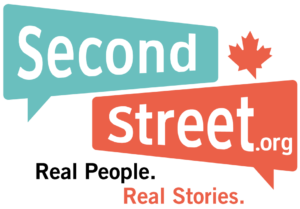FINANCIAL POST COLUMN: Ottawa’s Plan to Increase Health Care Wait Times

The Trudeau government recently announced it will be taking action to increase health-care wait times in Canada. That wasn’t exactly how it worded it but patients should know that longer wait times will likely be the end result.
The announcement was of $76 million in health-care funding penalties to seven provincial governments. What did these provinces do to earn such scorn from their federal overlords? They let patients use their own money to pay for diagnostic scans at private clinics. Ottawa doesn’t like that. The Trudeau government wants everyone to depend on the state for all health-care services — even though government wait times are often atrocious.
By penalizing provincial governments, the federal government is hoping they will stop allowing private diagnostic clinics to sell MRI scans, CT scans and other similar services to the public. But this begs an obvious question: where will these patients go if they can’t use private options?
Some may go abroad for care. They won’t want to wait six months, a year or even longer for a diagnostic scan. Many others will turn to our already stressed public system for care. In other words, they’ll make waiting lists longer. And what will be the effect of longer waits for tests that diagnose cancer, torn muscles, organ problems, etc. How many patients will suffer permanent damage due to ideological nonsense in Ottawa?
Consider what B.C. patient Joan Hama told SecondStreet.org in 2022: She almost died after being forced to wait nearly double the recommended delay for a colonoscopy. Hama’s colon eventually ruptured and sepsis set in. She had to be resuscitated multiple times at the hospital as her family waited to say their goodbyes. While politicians play political games with health care, Joan’s story is the type of real-world consequence, and she’s far from alone.
No other developed nation bans patients from using their own money to pay for diagnostics and surgery in their own provinces. Australia, New Zealand, Sweden and other countries with universal health-care systems that outperform ours give patients a choice: use the public system or pay for private care. Those who decide to pay for care end up taking pressure off the public system. Is it any wonder these countries also have shorter wait times and higher quality of care?
The Trudeau government’s recent decision is especially disappointing. It seemed last December there might be a ray of hope that the federal government would finally end its prohibition on private options outside our public system. Speaking to media about health-care funding, Prime Minister Trudeau said: “It wouldn’t be the right thing to do to just throw more money at the problem and sit back and watch the problem not get fixed because we didn’t use this moment to say, ‘No, no, no, it’s time to improve the system.’”
A few months after the prime minister’s comments, however, he announced more funding for health care with little in the way of reform. In other words, same old, same old. In 1991, governments spent an average of $1,683 per person on health care. Last year that was up to $5,629. The increase was nearly double Canada’s inflation rate. And yet the problems got worse. More money hasn’t solved our system’s woes.
What the federal government should have done is announce flexibility for provincial governments. Let them allow private options outside the public system. An Ipsos poll in February found 60 per cent of Canadians agree with this idea.
It’s time for health reform. A good first step? Keep the public system but remove bans on private options.
Colin Craig is president of SecondStreet.org.
This column was originally published in The Financial Post on April 13, 2023.
You can help us continue to research and tell stories about this issue by making a donation or sharing this content with your friends. Be sure to sign up for our updates too!

